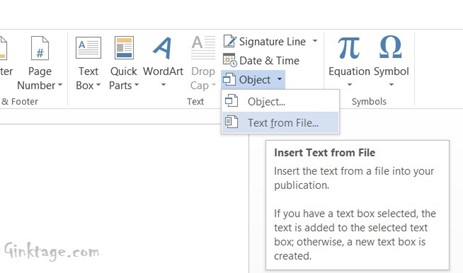

:max_bytes(150000):strip_icc()/007_insert-a-document-into-another-word-3540125-910139d7c6044a94bd5c707520b476a0.jpg)
In such an instance, the likelihood of the inserted text looking different from the original is very high.įor instance, every document has a paragraph style named "Normal." If the receiving document has the Normal style defined to display text as 12-pt Ariel and the document being inserted has the Normal style defined to display text as 10-pt Times New Roman, then any paragraphs in the original document formatted with the Normal style will adopt the 12-pt Ariel formatting when inserted in the receiving document. If the receiving document has a style of the same name as is used by the document being inserted, then the style attributes in the receiving document are used in preference to those in the document being inserted. When you insert one document into another, Word transfers all the formatting-both styles and explicit formatting-from the original document and adds it to the receiving document. Notice I said "some." The reason is because most of the formatting headaches will be centered around the actual formatting of inserted text. This could stop some of the reformatting headaches. This won't cause the receiving document to automatically have the same margins on the inserted document, but you will be able to manually set the margins between the section breaks so that they match what is in the two-page document. One way to help mitigate this problem is to insert section breaks before and after where the two-page document will be inserted. If the margins in both documents are not the same, then the inserted document will be reformatted within the new margins and you end up with something that looks different than the original. When you insert one document into another, Word assumes that you want to use the same page margins as those in the receiving document, even if those are different than the margins in the original document. Consider, for a moment, the simple issue of page margins. Why? Because of the way that Word handles formatting. It is really hard to do this, with consistent results, in Word. He wants to insert a two-page document into the middle of a longer document and keep the same formatting so that when inserted the two pages look the same as they do normally.
How to insert text from another document in word 2013 how to#
Have you created a page in Publisher, and you want to add another copy of that page to the file? Find out how to duplicate a page in Publisher and save yourself the time and frustration that would typically accompany recreating that page from scratch.Randall wonders how he can insert a document into the middle of a larger document and keep the same look and formatting. Note that if there is a lot of text in the file, Publisher may spread it out across multiple pages. Step 4: Browse to the Word document to add to the Publisher document, select it, then click the OK button. Step 3: Click the Insert File button in the Text section of the ribbon at the top of the window. Step 2: Click the Insert tab at the top of the window. Step 1: Open your Publisher document in Publisher 2013. Publisher will also import other document objects, such as pictures and formatting, that might be present in the Word document. The steps in this article assume that you have a Word document, and that you want to add the text from that file to your Publisher document. How to Insert a Word Document in Publisher 2013 Our tutorial below will show you how to insert a Word document from your computer into your Publisher file, allowing you to quickly duplicate the content from that original Word file directly on the page in Publisher. Do you have the content for your Publisher file in a Word document, and you either don’t want to copy and paste it into Publisher, or you tried and became frustrated with the output? Fortunately Publisher has a tool that will let you insert a file into your Publisher document, and it is possible to do this with a Word document.


 0 kommentar(er)
0 kommentar(er)
